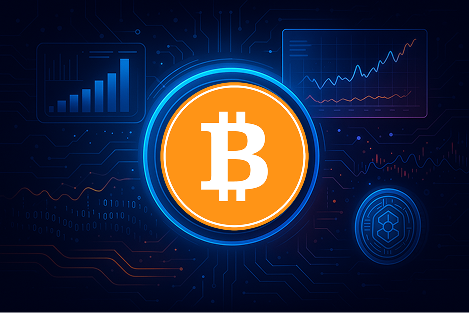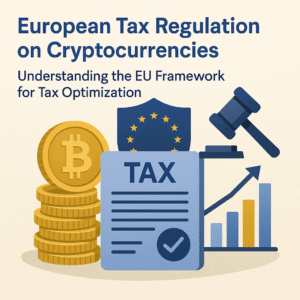Aeternity (AE): The Scalable Smart Contract Blockchain

Designed to address the scalability limitations of traditional blockchains, Aeternity (AE) introduces an innovative architecture combining state channels, decentralized oracles, and optimized smart contracts, positioning its network as a credible alternative for high-performance dApps.
Introduction – AE: A Performance-Oriented Blockchain with Decentralized Oracles
In the competitive ecosystem of smart contract blockchains, Aeternity (AE) positions itself as a technically robust protocol focused on efficiency, integrated oracles, and optimized governance. From its inception, it was designed to overcome scalability issues, high fees, and slow execution speeds encountered by chains like Ethereum. Aeternity offers an innovative alternative that combines performance, modularity, and flexibility in managing data and smart contracts. The AE token, the native asset of the Aeternity network, plays a central role in this ecosystem. It powers transaction fees, smart contract operations, and interactions with oracles, while supporting a decentralized governance model. AE is not merely a speculative asset; it is conceived as a technical tool serving a blockchain geared towards industrial performance and real-time data integration. This approach increasingly attracts investors seeking to diversify their portfolios beyond Ethereum-like standards and invest in technologically differentiated infrastructures.Key takeaways
- What Aeternity (AE) is, its role and utility within its blockchain;
- How its technical architecture functions (oracles, state channels, optimized VM);
- The project’s development history and key milestones;
- Real-world use cases of the AE token in Web3;
- Price evolution scenarios, investment prospects, and the best platforms to purchase it.
Presentation of Aeternity (AE) – A Blockchain Focused on Performance and Contractual Efficiency
Aeternity (AE) is a blockchain protocol designed to provide a highly scalable and cost-effective infrastructure for executing complex smart contracts. Born from a desire to surpass the limitations faced by first-generation blockchains, Aeternity offers an architecture aimed at optimizing processing speed, transaction privacy, and the flexibility of interactions between users and external data. The core of Aeternity’s proposition rests on three differentiating elements: native integration of oracles, the use of state channels to execute smart contracts off-chain, and a decentralized governance system through prediction markets (futarchy). These innovations are designed to ensure low resource consumption, reduced transaction fees, and a significant improvement in scalability—essential factors for the widespread adoption of blockchain technology in both public and private sectors. Unlike Ethereum, where each operation must be recorded on the main chain, Aeternity allows most contractual interactions to be executed off-chain via its state channels, without compromising security. This hybrid approach relieves the main network from a large number of transactions while ensuring finality and traceability when they are eventually recorded. Additionally, the direct integration of oracles into the protocol eliminates the need for external solutions, reducing points of failure and increasing trust in the accuracy of the data used. AE, the network’s native token, is used for paying fees, rewarding miners, and participating in governance. It also serves as a vital component in the protocol’s internal economy, supporting all interactions between users, developers, and validators. With its ambitious technological vision and an active community base, Aeternity positions itself as an agile Web3 infrastructure, oriented towards the future.Technical Functioning of Aeternity (AE) – A Performance-Oriented Architecture
Aeternity is built on a blockchain architecture designed to address the main limitations of traditional blockchains: scalability, high transaction fees, and the slow execution of smart contracts. To achieve this, the protocol relies on a series of technical innovations that position it as a high-performance alternative to Ethereum and other competing platforms. At the core of Aeternity’s technology is its use of “State Channels.” These channels allow users to execute smart contracts and transactions off the main blockchain (off-chain), while maintaining cryptographic security equivalent to that of the main network. The results of these interactions are only published on-chain when necessary. This mechanism significantly reduces costs, alleviates network congestion, and increases operational throughput. Another key technical pillar of Aeternity is its integrated oracle system. Unlike most blockchains that depend on external services like Chainlink to access real-world data, Aeternity embeds its oracles directly into the protocol. This improves both the responsiveness and security of decentralized applications using external data. The consensus mechanism is based on a hybrid model combining Proof-of-Work (PoW) and Proof-of-Stake (PoS). PoW (Cuckoo Cycle) is used to secure blocks, while PoS is employed for governance, particularly through a decentralized voting mechanism. This mixed approach balances network security, decentralization, and decision-making efficiency. Here are the key technical components that differentiate Aeternity:- State Channels: off-chain smart contract execution channels that improve scalability and reduce costs.
- Integrated Oracles: a native oracle system that securely introduces external data.
- Hybrid Consensus: combination of Proof-of-Work (network security) and Proof-of-Stake (governance).
- Sophia Language: a functional programming language inspired by OCaml, designed for smart contract reliability.
- Futarchy Governance: an innovative decision-making model based on market forecasting and token holder voting.
History and Creation of Aeternity (AE) – A Visionary Project Born in 2016
From the outset, Aeternity brought together experienced developers, particularly in Erlang, a language used in telecommunications systems for its reliability in distributed environments. This technological foundation allowed the team to lay the groundwork for an innovative protocol. In 2017, the project successfully raised funds through an Initial Coin Offering (ICO), which significantly accelerated infrastructure development. The mainnet launch took place in November 2018, marking a crucial milestone in the realization of Aeternity’s vision. The protocol then became fully operational, with the integration of initial technical features: native oracles, hybrid consensus, and the Sophia language for smart contracts. Since then, Aeternity has continued to evolve through multiple updates and increasing community involvement. Today, the project positions itself as a credible alternative to major smart contract blockchains, with a strong focus on performance, distributed governance, and interoperability. Key Milestones Timeline:- 2016: Launch of the Aeternity project by Yanislav Malahov
- 2017: Completion of ICO to fund development
- November 2018: Aeternity mainnet launch
- 2019–2023: Progressive deployment of key features, scalability enhancements, and community governance development
Founders and Team
Aeternity was launched in 2016 by Yanislav Malahov, one of the pioneers of the blockchain space. Nicknamed the “Godfather of Ethereum” for his early involvement in smart contract concepts, Malahov aimed to create an infrastructure that was faster, more scalable, and more efficient than existing blockchains. The goal was clear: to build a platform capable of supporting large-scale decentralized applications while ensuring low costs, effective decentralized governance, and native integration of advanced features such as oracles and state channels.
What Makes [Nom cryptomonnaie] Unique?
Unique Features and Use Cases of Aeternity (AE)
Aeternity stands out through a technical architecture designed to overcome the limitations of traditional blockchains in terms of scalability, interoperability, and user experience. From the outset, the network was built to support decentralized applications (dApps) with high transaction frequency, relying on several major innovations. Among these, State Channels enable off-chain execution of smart contracts, significantly reducing fees and congestion while preserving privacy. This approach is particularly useful for applications requiring frequent interactions, such as gaming or decentralized finance.
Integrated oracles at the protocol layer are another distinctive strength. Unlike many blockchains that rely on external solutions, Aeternity provides a native method for injecting real-world data into smart contracts. This improves the security and reliability of operations sensitive to external events. Additionally, the Æternity Naming System (ÆNS) offers human-readable names to replace complex cryptographic addresses, enhancing user experience and reducing the risk of errors.

The platform also employs a virtual machine called FATE, optimized for security and execution speed, along with its proprietary programming language, Sophia, designed for formal verification of contracts. Lastly, the Hyperchains solution allows for the creation of independent but interconnected sidechains, increasing the network’s overall capacity without sacrificing decentralization.
Main Use Cases:
- Decentralized Finance (DeFi): low-fee trading, lending, and derivatives.
- Digital Identity: decentralized management via ÆNS and smart contracts.
- Supply Chains: real-time tracking through integrated oracles.
- Online Gaming: fast, low-cost processing for frequent interactions.
- Electronic Voting: reliable, transparent governance mechanisms.
Conclusion and Future Outlook for Aeternity
Aeternity positions itself as an innovative solution in the smart contract blockchain landscape, relying on original technologies and an architecture optimized for scalability and efficiency. By combining off-chain smart contract execution, a decentralized oracle system, human-readable naming, and an integrated governance model, AE offers a technically robust alternative to major industry players. Its performance-focused approach and resource optimization particularly appeal to developers of decentralized applications, IoT-driven businesses, and projects requiring rapid integration of reliable oracles. Despite the intense competition in this space, Aeternity maintains a distinctive position through the coherence of its technical vision, an active community, and the continuous refinement of its roadmap. AE’s future will largely depend on its ability to expand adoption, form strategic partnerships, and evolve its features in a stable and transparent manner. Its decentralized governance model also brings welcome flexibility to adapt to new Web3 challenges. As such, AE represents a serious project worth close attention for investors and developers seeking high-performance, scalable, and ethical alternatives in the blockchain ecosystem.
FAQ: Everything You Need to Know Before Investing
Is it too late to buy Aeternity (AE)? No, Aeternity remains an active project with a clear roadmap and an engaged community. Its unique positioning on scalable smart contracts and integrated oracles makes it a credible alternative to traditional blockchains. However, as with any cryptocurrency investment, it’s essential to conduct your own research and assess the associated risks. Which platform is best for investing in AE? Several reliable platforms allow users to buy and trade the AE token, including Gate.io, MEXC, CoinEx, and KuCoin. These exchanges offer trading pairs with major cryptocurrencies like USDT, making access to Aeternity easier for investors. What is the safest storage method for AE? To securely store your AE tokens, it is recommended to use compatible wallets such as:- Trust Wallet: User-friendly mobile app supporting AE.
- Atomic Wallet: Multi-asset wallet with an intuitive interface.
- Base æpp Wallet: Official Aeternity wallet for Android.
- AirGap Wallet: Secure solution with offline private key storage.
- Ledger Nano S: Hardware wallet offering optimal security for long-term storage. It is essential to choose a wallet that fits your needs and always back up your private keys in a safe location.
Disclaimer :
Trading is risky and you may lose all or part of your capital. The information provided does not constitute financial advice and/or an investment recommendation
Top-Rated Platforms to Trade Crypto
Explore Our Financial Views on the Market
Crypto News & Insights
Digital Assets Forum 2026 returns to
The Digital Assets Forum (DAF), one of Europe’s most respected...
Blockchain and Cryptocurrency Conference (B2C’ 2025):
The Blockchain and Cryptocurrency Conference (B2C’ 2025) is scheduled for...
European Tax Regulation on Cryptocurrencies: Understanding
The regulation of the cryptocurrencies market in the European Union...













